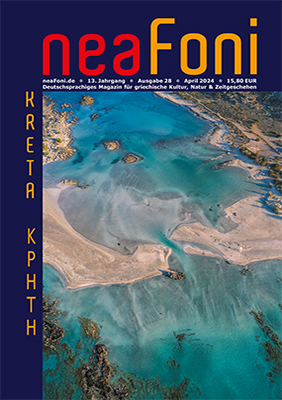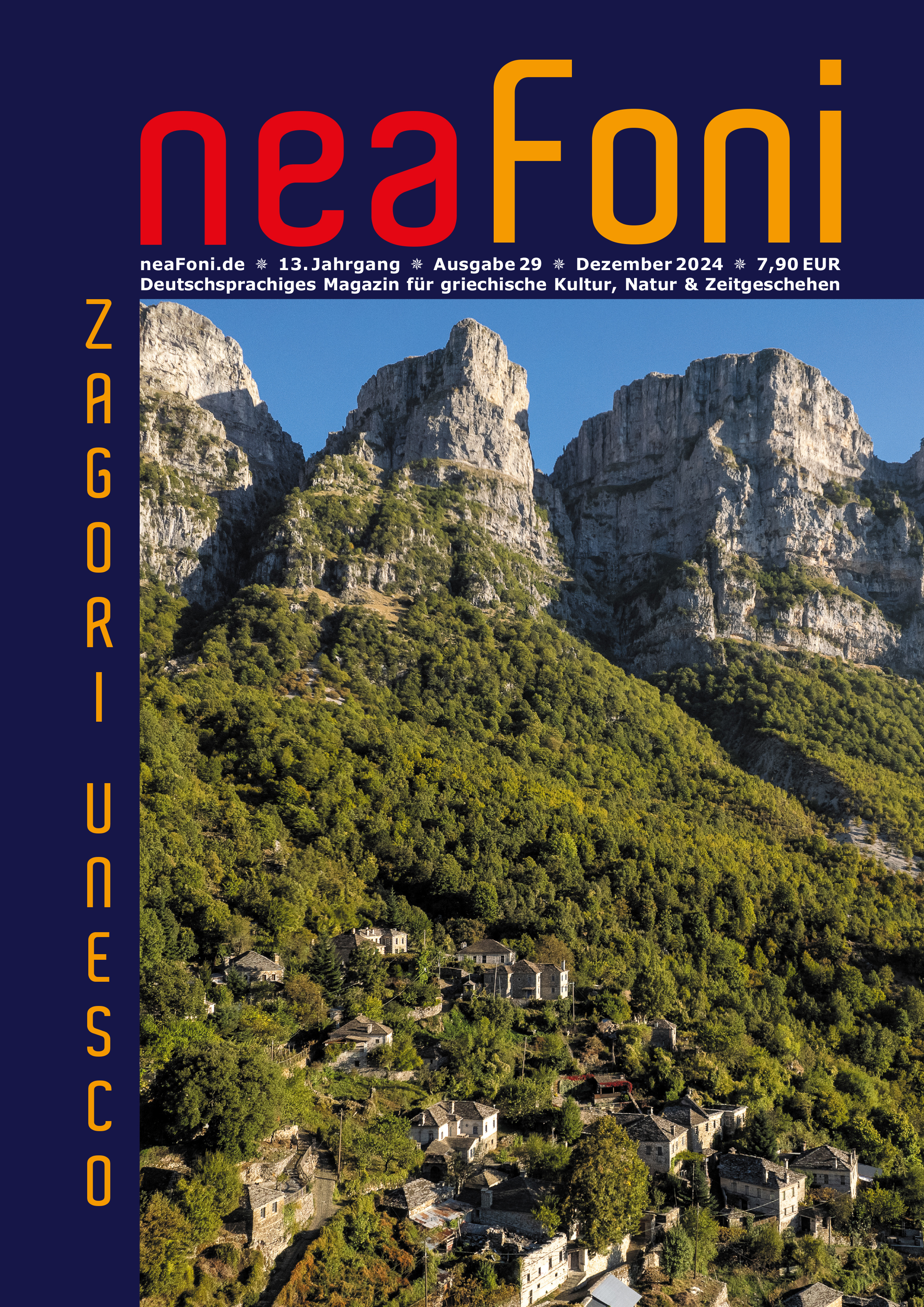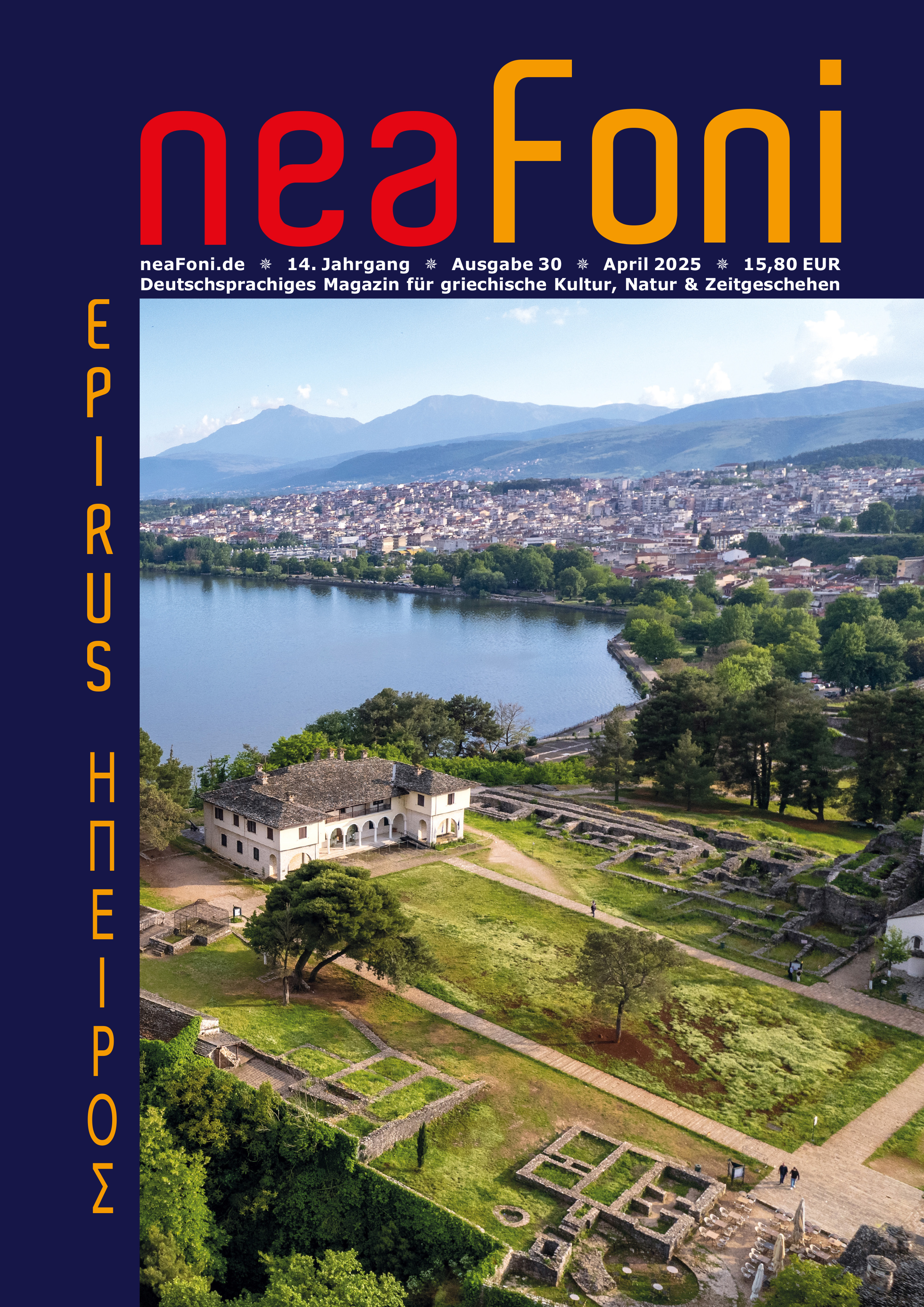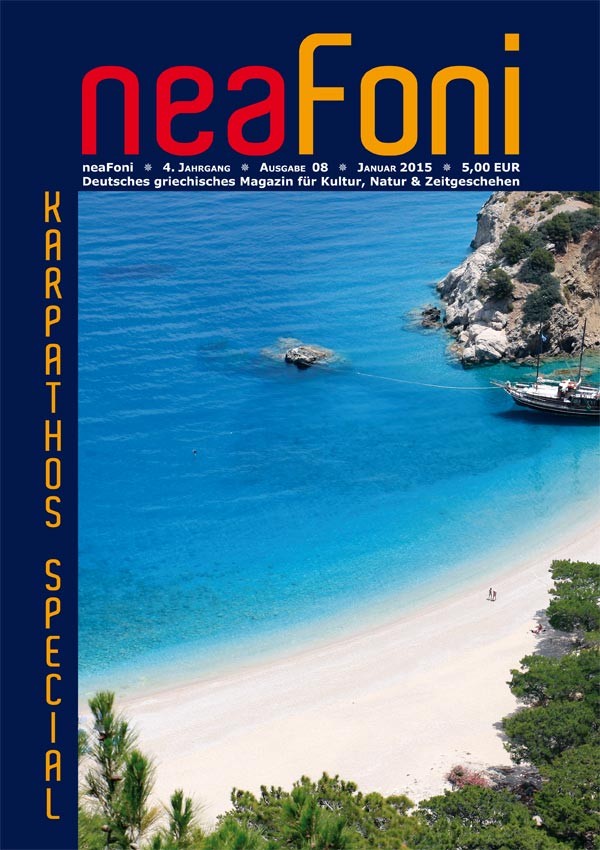Eigentlich stellt die Insel Saria die nördliche Verlängerung der weitaus bekannteren Insel Karpathos im Südosten der Ägäis dar. Die beiden Inseln sind durch eine ca. 100 Meter breite und 4 Meter tiefe Meerenge voneinander getrennt. Aufgrund ihrer großen historischen und archäologischen Bedeutung sind Saria, vor allem aber das Gebiet von Palatia (Paläste, A.d.Ü.) von besonderem Interesse. Palatia war seit frühester Zeit besiedelt. In der Umgebung der antiken Ortschaft wimmelt es von Überresten, die von den verschiedenen Kulturen zeugen, die der Insel im Laufe der Jahrhunderte ihren Stempel aufgedrückt haben. Dazu gehören antike Gräber, Ruinen altchristlicher Basiliken, umgestürzte Säulen, eindrucksvolle Kapitelle, einzigartige Kuppelbauten, der Rest einer Deichanlage, Zisternen, Trockenmauerwerke zur Hangbefestigung sowie Gräben, die noch bis vor wenigen Jahrzehnten von emsigen Landwirten bewirtschaftet wurden.
Denn Nachweis für die sehr frühe Besiedlung der Gegend liefern auch die bemerkenswerten Fundstücke (zweischneidige Äxte, Meißel, Münzen, Stein- oder Bronzewerkzeuge), die in die vordorische Epoche datiert sind und Merkmale der trojanischen Zivilisation aufweisen.
Eine weitere Blüte erlebte Palatia während der ersten christlichen Jahrhunderte; davon zeugen nicht zuletzt die großen Basiliken, die im 5. und 6. Jahrhundert n. Chr. in der Stadt erbaut wurden, wobei die wichtigste diejenige ist, an deren Stelle heute die Kapelle der Hagia Sophia steht.
In den Steuerlisten Athens aus dem 5. Jahrhundert v. Chr., die insgesamt 270 besteuerte Städte umfassten, finden sich auch Hinweise auf die Sarier. Dies erlaubt die Schlussfolgerung, dass Saria (Saros) in der klassischen Zeit über eine Hauptstadt verfügt haben muss. Diese Stadt kann keine andere als das antike Nisirosgewesen sein, das der Geograf Strabon(ca. 63 v. Chr.-ca. 23 n. Chr.) als eine der vier Städte der Insel Karpathosbezeichnet hat und die auf dem Gebiet von Palatia errichtet worden sein musste, handelt es sich doch um das einzige Gebiet, in dem antike Ruinen gefunden wurden. Es gilt jedenfalls als sicher, dass im Zuge der Aufnahme von systematischen Ausgrabungsarbeiten weitaus mehr historische und archäologische Fundstücke ans Licht geholt werden würden.
Wie aus den verstreut herumliegenden Ruinen frühchristlicher Bauwerke hervorgeht, hat vermutlich hat ein vor dem 8. nachchristlichen Jahrhundert stattgefundenes großes Erdbeben die Stadt bis auf die Grundmauern zerstört. Etwa zur gleichen Zeit setzen die Angriffe der arabischen Flotte in der Ägäis ein, wodurch sich die insularischenBevölkerungen gezwungen sehen, die küstennahen Siedlungen zu verlassen und sich in die besser geschützten und befestigten Gebirgslagen niederzulassen. Typisches Beispiel einer solchen Umsiedlung ist das karpathische Bergdorf Olymbos, das als Fluchtort der Einwohner der einstigen Küstensiedlungen Vroukounta und Nisiros entstanden ist.
Offensichtlich strebten die serazenischen Piraten die Erlangung der Kontrolle über die strategisch bedeutende Meerenge zwischen Rhodos und Karpathos an; der Hafen von Palatia war der dafür am besten geeignete Stützpunkt. Nach der Einnahme benutzten die Araber das Baumaterial der zerstörten byzantinischen Stadt, um die zahlreichen Kuppelbauten zu errichten, die sämtliche Forscher, die seitdem die Insel besucht haben, beschäftigt und beeindruckt haben.
Auf das Vergangene verweisen bis heute Ruinen und archäologische Fundstücke, aber auch eine Vielzahl von Traditionen, die an die byzantinische Größe und an die Piratenzeit erinnern, oder die früheren Kulturen und deren Überreste zu erklären versuchen.
Nach der Entvölkerung von Palatianutzten die Bewohner von Olymbos das Gebiet bis zur vollständigen Einstellung der Landwirtschaft ab der Mitte des 20. Jahrhunderts zum Anbau und zur Viehzucht. Ihre neue Siedlung errichteten die Nachfahren der Bewohner von Palatia entsprechend ihrer Bedürfnisse und gemäß ihrer eigenen ästhetischen Prinzipien in einer sichereren Gegend im Inneren von Saria, dem heutigen Dorf Argos.
Die heute unbewohnte Insel Saria bietet viele Naturschönheiten und ist ein ideales Gebiet für Wanderer. Zwischen Mai und September, wenn es der Meltemi zulässt, fahren Ausflugsboote von Diafani aus zur etwa 70 Minuten entfernten Bucht von Ta Palatia. Unterwegs passiert man Steilküsten, Meeresgrotten und den traumhaften Strand von Magiria. Mit einer Höhe von 631 Metern und eine Länge von 8 Kilometer bietet die gebirgige Saria für Wander- und Badetouristen Stille, Ruhe, einsame Strände und Sonne.
Aus dem Griechischen: Theo Votsos





